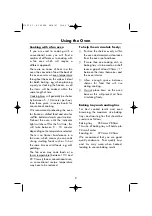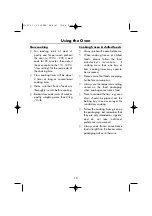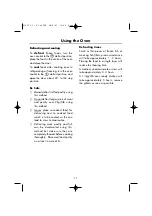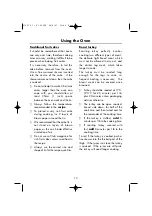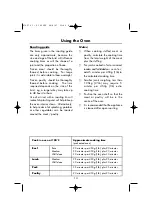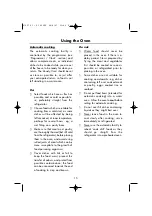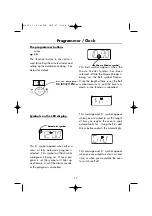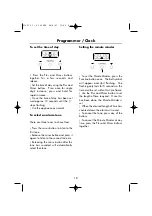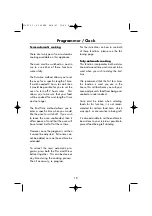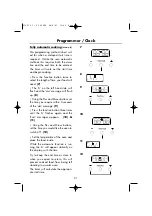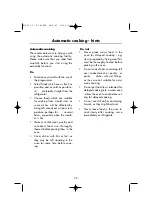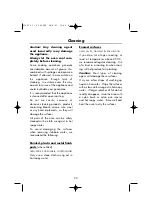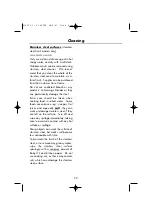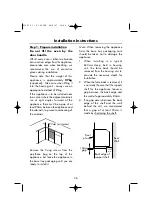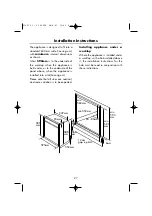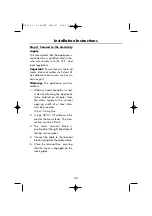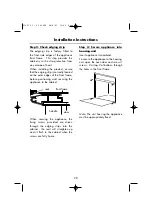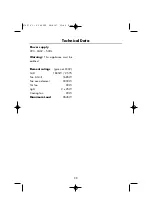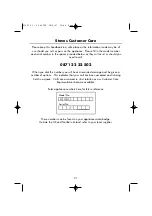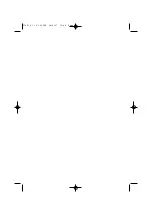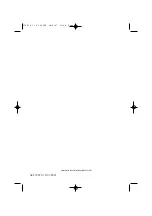
C a u t i o n :
Any cleaning agent
used incorrectly may damage
the appliance.
Always let the oven cool com-
pletely before cleaning.
Some cooking operations generate
considerable amount of grease, this
combined with spillage can become a
hazard if allowed to accumulate on
the appliance through lack of
cleaning. In extreme cases this may
amount to misuse of the appliance and
could invalidate your guarantee.
It is recommended that the appliance
is cleaned after open roasting.
Do not use caustic, corrosive or
abrasive cleaning products, products
containing bleach, coarse wire wool
or any hard implements, as they will
damage the surfaces.
All parts of the oven can be safely
cleaned with a cloth wrung out in hot
soapy water.
To avoid damaging the surfaces
when removing stubborn marks, we
recommend the following:
Painted, plastic and metal finish
parts
(where fitted)
O V E N D O O R
,
D O O R H A N D L E
,
C O N T R O L K N O B S
Only use a clean cloth wrung out in
hot soapy water.
Enamel surfaces
OVEN CAVITY
,
GRILL PAN
&
ROASTING TIN
If you do a lot of open roasting, or
roast at temperatures above 200˚C,
we recommend regular cleaning. Use
of a trivet in a roasting tin when roast-
ing will help reduce fat splashing.
Caution:
Most types of cleaning
agent will damage these surfaces.
Only use a few drops of washing up
liquid in hot water. Wipe the surfaces
with a clean cloth wrung out in hot soapy
water - if larger splashes of fat do not
readily disappear, scrub the area with
a nylon brush or nylon pan scourer
and hot soapy water. Rinse well and
heat the oven to dry the surfaces.
23
Cleaning
27007 01 - P1 600EF 28/8/07 11:46 Page 25

